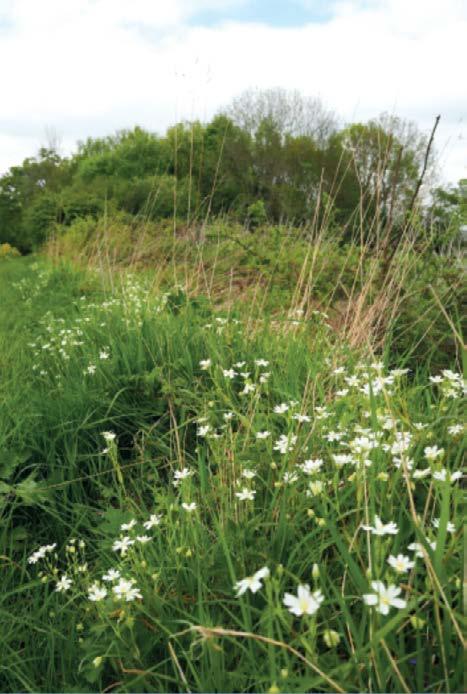
3 minute read
Crop and Carbon
OPTIMISING THE DOUBLE YIELD
Written by Thomas Gent, CEO Agreena UK
Advertisement
It’s no secret that employing regenerative farming techniques – minimal soil disturbance, the use of cover crops and organic manures, applying carbon-rich fertilisers – both reduce the amount of farm-generated greenhouse gas (GHG) emissions and add to the amount of carbon stored in the soil. These GHG reductions and carbon storage initiatives can then be quantified annually, depending on the practices carried out over the harvest year. This, in a nutshell, is what’s referred to as carbon farming.
The quantification of GHG reduction and carbon storage is measured in units called carbon certificates; one certificate represents one tonne of CO2-equivalent emissions (either removed or reduced). If you’re a typical farmer who’s practising carbon farming, you can expect to yield between one and two carbon certificates per hectare per year. But that’s just the beginning. The exciting bit comes when you’re able to optimise and garner a double yield, meaning both crop yield and carbon certificate yield. This is where I’d kindly like to ask you to pause for a moment, take a deep breath and reflect on this perspective:
A carbon certificate yield should be thought of as a crop yield.
Here’s why: Both yields take place once a year in line with the typical summer-tosummer crop cycles we’re all used to. This means you have the potential to harvest two crops from your field: one wheat crop and one carbon crop, for example. Once you’ve harvested your carbon certificates, you need to decide what to do with them. Much like a normal cash crop, they can be kept, used for your own purposes or sold to an end user. You can even work with a company to take them to market for you.
As a farmer myself, I’m constantly researching new and innovative ways to turn my farm into a battleground for combating climate change. Caring for the soil under my feet to sequester carbon from the atmosphere is a profitable and sustainable way to optimise my farm’s carbon negative position while at the same time producing a new asset in the form of a carbon certificate But it isn’t just me; I’ve spoken with many farmers in the area who have recently transitioned to carbon farming through the Agreena certification programme and are now yielding and earning from their carbon harvest.
They’re using Agreena to help them strategise how they can move further away from their established baseline to increase their yield of carbon certificates per hectare – moving more fields over to direct drilling, for instance. Still others have found that crops in the rotation with a high carbon yield, such as pulses and linseed, are inherently less profitable. The carbon payment they’ve received has topped up their profitability and improved their soil.
Other key takeaways from these conversations have been that the most ‘carbon yielding’ crops are those that have a cover crop before them. This has helped reduce the need for artificial fertiliser in the cash crop that follows, which can help save big considering the current high price of fertiliser. Planting an over-the-winter crop and following it with a spring cash crop can also generate a lot of carbon certificates and allow you to address problematic, annual winter weeds. This is a win-win for carbon yields and addressing long-standing weed problems.
The Agreena soil carbon platform, aptly named AgreenaCarbon, works to support you in the quantification and planning that’s necessary to begin earning carbon certificates after each annual harvest year. Employed by farmers in 14 countries, the internationally accredited soil carbon certification programme works with world-leading regenerative agriculture technology and external verification partners, so there should be no doubt for corporate buyers and farmers that the programme delivers high-quality carbon certificates. The programme is available to all farms of all sizes and types, and makes a transition to regenerative farming practices financially viable. Perhaps best of all, no matter where you are in your regenerative journey, you can enter the programme.
To learn more about AgreenaCarbon and how you can start optimising your double yield in the field, visit
www.agreena.com










